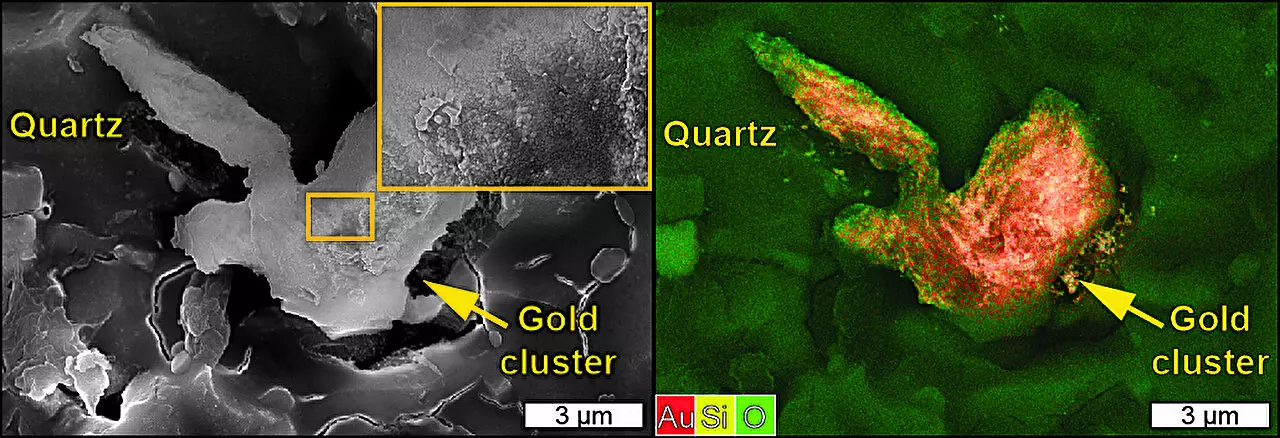The allure of gold has captivated humanity for centuries, driving both exploration and exploitation of the Earth’s resources. Traditional explanations of how gold nuggets form have revolved around geological theories focused largely on fluid dynamics and mineral precipitation. However, a groundbreaking study led by researchers from Monash University is shedding new light on this enigma by introducing a more dynamic and electrically charged perspective to the process of gold nugget formation.
For years, geologists have largely accepted the conventional model which posits that gold is deposited through hot, mineral-laden fluids moving through geological fractures. As these fluids cool or change chemically, the gold within them precipitates out, eventually becoming trapped in quartz veins. This theory explains many facets of gold formation; however, it falls short when accounting for the origins of larger nuggets, given the extremely low concentrations of gold in aqueous solutions.
Dr. Chris Voisey, a leading researcher at the Monash University School of Earth Atmosphere and Environment, has articulated the limitations of this traditional viewpoint. The widely-accepted notion does not sufficiently clarify how sizeable deposits materialize in nature, leading scientists to seek alternative explanations that could elucidate this geological phenomenon.
Enter piezoelectricity, a captivating physical property exhibited by quartz—one that literature suggests could offer significant insights into gold nugget formation. Quartz can generate electrical charges when subjected to mechanical stress. Common applications like quartz watches and lighters utilize this principle. Drawing inspiration from the forces exerted by earthquakes, the research team sought to explore whether these seismic activities activate a similar electric response in quartz that facilitates gold deposition.
This innovative study utilized laboratory-based experiments to test the hypothesis. Quartz crystals were submerged in a gold-rich liquid and subjected to stress imitating the shaking associated with seismic events. Observing the quartz samples under a microscope post-experiment, the results unveiled a remarkable interaction: gold was electrochemically deposited onto the surface of the quartz.
The research revealed that not only did the stressed quartz attract gold ions from the surrounding fluid, but it also generated gold nanoparticles that tended to cluster onto pre-existing gold grains. This is a pivotal finding. While quartz is an electrical insulator, gold acts as a conductor, creating a “growth focal point.” Such a dynamic promotes the tantalizing possibility that once some gold deposits form, further accumulations are more likely, effectively allowing the existing grains to become “plated” with additional gold.
Professor Andy Tomkins, a co-author of the study, noted the significant implications of these findings. The potential for repeated seismic stress to continuously generate electric charges within quartz could elucidate how large nuggets evolve in nature over time. Each seismic event could translate into minute but measurable gold accumulations, setting the stage for the formation of substantial nuggets cherished by both treasure hunters and geologists.
The conclusions drawn from this research provide much more than a simple explanation; they open the door to understanding the intricate interplay between geological and chemical alike. The quartz’s function can be likened to a natural battery, where gold serves as an electrode, steadily amassing additional gold during each seismic occurrence.
Moreover, this new interpretation could be significant in mining and geological exploration, offering a fresh lens through which to identify regions with a higher potential for large gold deposits. As the field of geology continues to evolve, the integration of electrical phenomena might inspire further research into mineral deposit formation, ultimately refining our understanding of the Earth’s complex systems.
The study from Monash University is paving the way for a more comprehensive understanding of how nature crafts these magnificent gold nuggets, intertwining earth sciences with electrical physics in a tantalizing synthesis that challenges and enhances prior assumptions about mineral formation.


Leave a Reply